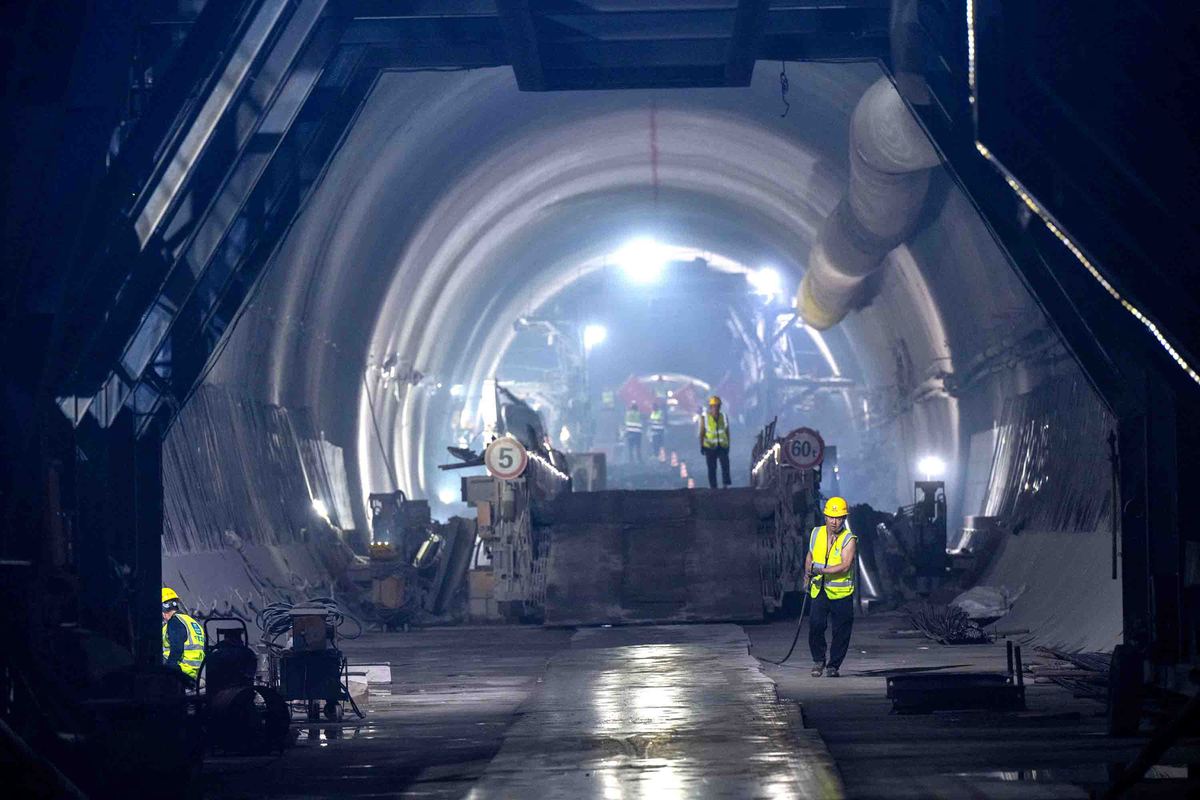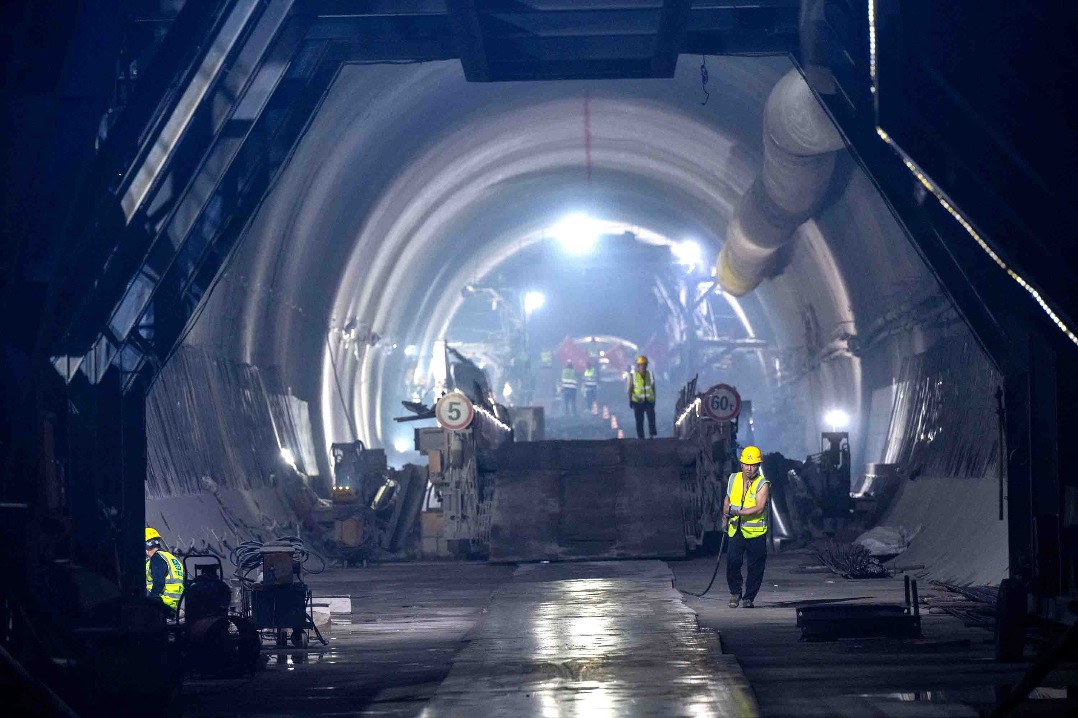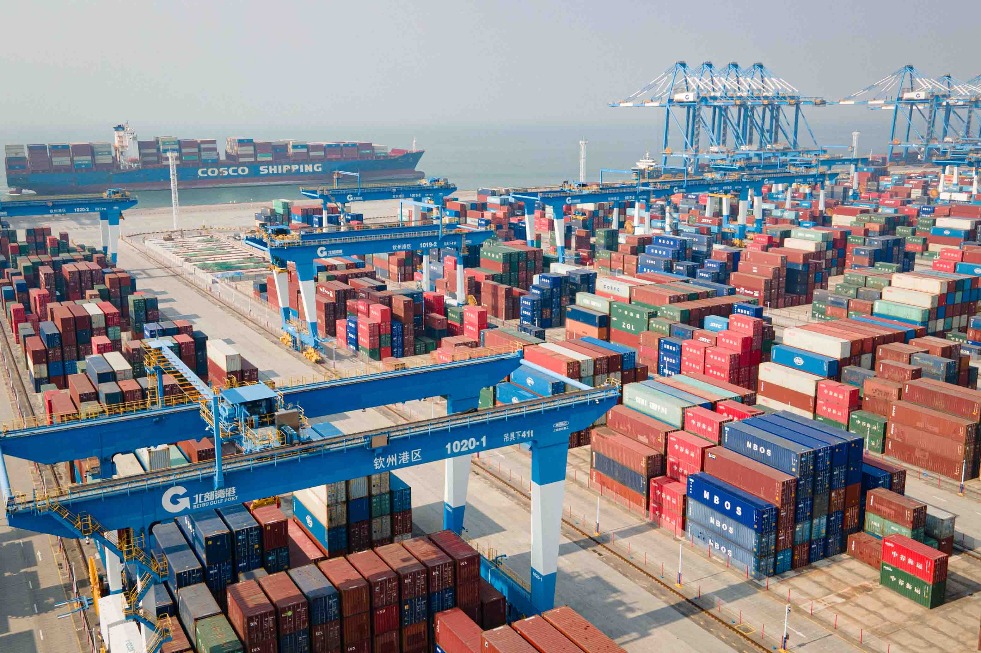Railways benefit diverse groups


Wen Huaxin, an army veteran who retired in 2018, decided to take on a new job in January 2023 when he learned a new railway was to be built in his hometown in Wuxuan county, Guangxi Zhuang autonomous region.
Before that, he was a police assistant from April 2019 at the public security bureau in the county administered by the prefecture-level city of Laibin.
State builders from Fifth Engineering Co Ltd of China Railway No 4 Engineering Group are helping construct the 237.8-kilometer Liuzhou-Wuzhou Railway that passes by Wen's hometown of Ertang town in Wuxuan, with construction having started in October 2022.
In January 2023, Wen was welcomed to CREC4's project team, working at the third working section's material and machinery unit.
"The job was a leap for me, as CREC4 offered me a monthly salary exceeding 7,000 yuan ($972) while most locals can only earn between 2,000 and 3,000 yuan each month, elevating me to a high-income earner, and largely improving my family's financial situation," he said.
"When the railway begins operations — expected in 2026 — our travel will be much easier, as the new railway station is about 10 minutes away from my home by car and it only takes 30 minutes to reach the prefecture-level city of Liuzhou by train," he said, adding that previously, a trip to Liuzhou and Laibin on an inter-county bus could take three to four hours.
"As a construction worker helping to build a railway in my hometown, I have been trying to develop various skills needed for my job," he said, noting that the work has boosted his skill sets and heightened his confidence in future construction work.
Wen said he feels extremely honored to have become a builder who can contribute to the economic and social development in his hometown, as trains on the Liuzhou-Wuzhou Railway can transport both goods and passengers.
"With the new railway being built, many new factories and logistics parks have opened along its route, providing more opportunities for locals to work near home," Wen said, affirming that in the future, the new railway will bring more tourists to his hometown while enhancing the flow of goods.
Yu Enfu, a driver for the CREC4 project department for the Liuzhou-Wuzhou Railway, is from the prefecture-level city of Baise in Guangxi.
Yu said he is in urgent need of funds to support his family with three children — two attending college and one in elementary school.
As a team member of the CREC4 project department, his food and accommodation expenses are being covered, and his monthly salary can be saved and sent back to his wife, making the family income much more stable.
"If I look for a job at home, the monthly salary can be quite low and unpredictable," he said, adding that if any urgent family issue demands his attention, he can rush back within half a day.
"My family is very happy with my work helping build a railway," Yu said.
Besides the Liuzhou-Wuzhou Railway, CREC4 is also helping construct a 648-km Nanning-Zhuhai HSR, which runs for 304 km in Guangxi and 344 km in neighboring Guangdong province, with a designed speed of 350 km per hour for the trains.
Wang Wei, office director of the CREC4 project department, said ever since he entered the construction site in October 2022, the department has spent over 10 million yuan purchasing local vegetables, fruits and other goods, as well as daily necessities through targeted procurements.
Wang's project department is stationed in Rongxian county of Yulin, bordering the prefecture-level city of Wuzhou that administers Cenxi county.
"To help the residents in Guangxi, we have hired over 1,500 locals for more than 1,000 positions requiring different skills, providing them with salaries exceeding 33 million yuan," Wang said.
"We intend to help them achieve both skills improvement and household income growth, as a way to aid local rural vitalization," he said.
The positions can help offer sustainable jobs for locals, forming full-cycle support through a mode of "construction period employment and operation period positions", Wang said, adding that this can effectively transform an infrastructure construction project into a long-term platform that benefits locals.




































